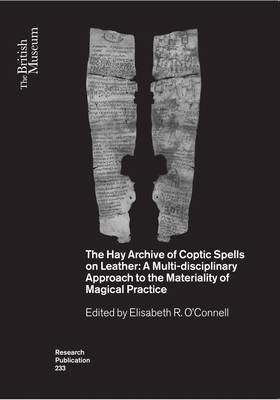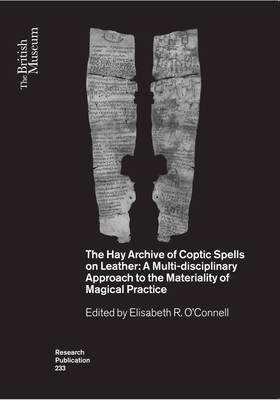
- Afhalen na 1 uur in een winkel met voorraad
- Gratis thuislevering in België vanaf € 30
- Ruim aanbod met 7 miljoen producten
- Afhalen na 1 uur in een winkel met voorraad
- Gratis thuislevering in België vanaf € 30
- Ruim aanbod met 7 miljoen producten
Zoeken
The Hay Archive of Coptic Spells on Leather
A Multidisciplinary Approach to the Materiality of Magical Practice
€ 66,95
+ 133 punten
Omschrijving
The Hay archive of Coptic manuscripts consists of seven fragmentary sheets of leather bearing spells for divination, protection, healing, personal advancement, cursing and the satisfaction of sexual desire. Purchased from the heir of the Scottish Egyptologist and draftsman, Robert Hay (1799-1863), the manuscripts arrived at the British Museum in 1868. Since they were first published in the 1930s, they were understood to be the work of a single copyist writing around AD 600 in the Theban region of Upper Egypt. The present volume has confirmed, nuanced or challenged these assessments on the basis of scientific analysis and close study of the manuscripts.
Prompted by the urgent conservation needs of the corpus, this study seeks to provide a model, integrated approach to the publication of ancient texts as archaeological objects by providing a full record of provenance and collection history; scientific analysis; conservation approach and treatment; a new complete edition and translation of the Coptic texts; and an extended discussion of the cultural context of production. Written on poorly processed calf, sheep and goat skin, the manuscripts were copied by multiple non-professional writers in the 8th-9th centuries. Employing a striking combination of ancient Egyptian, Graeco-Roman, biblical and extra-biblical motifs, their contents represent a Christian milieu making use of the mechanics of earlier 'magical' practice in a period well after the arrival of Islam.
Prompted by the urgent conservation needs of the corpus, this study seeks to provide a model, integrated approach to the publication of ancient texts as archaeological objects by providing a full record of provenance and collection history; scientific analysis; conservation approach and treatment; a new complete edition and translation of the Coptic texts; and an extended discussion of the cultural context of production. Written on poorly processed calf, sheep and goat skin, the manuscripts were copied by multiple non-professional writers in the 8th-9th centuries. Employing a striking combination of ancient Egyptian, Graeco-Roman, biblical and extra-biblical motifs, their contents represent a Christian milieu making use of the mechanics of earlier 'magical' practice in a period well after the arrival of Islam.
Specificaties
Betrokkenen
- Uitgeverij:
Inhoud
- Aantal bladzijden:
- 192
- Taal:
- Engels
- Reeks:
Eigenschappen
- Productcode (EAN):
- 9780861592333
- Verschijningsdatum:
- 4/11/2022
- Uitvoering:
- Paperback
- Formaat:
- Trade paperback (VS)
- Afmetingen:
- 208 mm x 296 mm
- Gewicht:
- 979 g

Alleen bij Standaard Boekhandel
+ 133 punten op je klantenkaart van Standaard Boekhandel
Beoordelingen
We publiceren alleen reviews die voldoen aan de voorwaarden voor reviews. Bekijk onze voorwaarden voor reviews.










